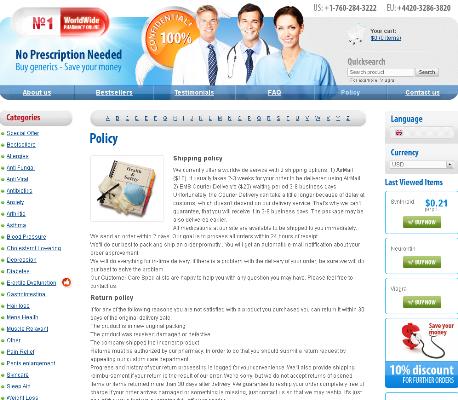| Royal City Drugs |
To Visit Online Pharmacy Click HERE ↓
Bactrim for Utis: a Comprehensive Guide
What Is Bactrim and How Does It Work?
Bactrim is a potent antibiotic combination consisting of sulfamethoxazole and trimethoprim. This medication works by inhibiting the bacterial synthesis of dihydrofolic acid and tetrahydrofolic acid, which are essential components for bacterial growth and multiplication. By targeting two separate enzymes involved in the folic acid pathway, Bactrim effectively halts bacterial proliferation and helps clear infections.
Frequently prescribed by doctors, Bactrim has been a mainstay for treating urinary tract infections (UTIs) due to its broad-spectrum efficacy. It is particularly effective against a variety of gram-negative and gram-positive bacteria, making it a versatile choice.
| Enzyme Targeted | Action |
|---|---|
| Dihydrofolate Reductase | Inhibits folic acid synthesis |
| Dihydropteroate Synthase | Prevents bacterial DNA replication |
One of the reasons Bactrim is frequently prescribed is its dual action mechanism, providing a strong defense against UTIs. However, it’s essential to take this medication exactly as prescribed to avoid resistance and side effects, which can be noticable in some patients.
Common Symptoms and Causes of Utis

Urinary tract infections (UTIs) often present with a variety of uncomfortable symptoms. People commonly experience a burning sensation during urination, frequent urges to urinate even when the bladder is empty, and cloudy or strong-smelling urine. Along with this, lower abdominal pain and occasional fever or chills may also be reported, indicating that the infection might have spread.
The causes behind UTIs are primarily bacterial, with Escherichia coli (E. coli) being the most frequent culprit. The bacteria can enter the urinary tract via the urethra and begin to multiply, leading to infection. Factors such as improper wiping, sexual activity, certain types of contraception, and a weak immune system can all increase the risk of getting a UTI.
Understanding the common symptoms and causes is essential for timely treatment with medications like Bactrim. By targeting the bacteria directly, Bactrim can effectively reduce the duration and severity of the infection, bringing much-needed relief. However, it is always advisable to seek medical advice before starting any antibiotic treatment to ensure it’s the best option for your specific case.
Why Bactrim Is Prescribed for Utis
Bactrim is a commonly prescribed antibiotic for urinary tract infections (UTIs) because of its powerful formulation, which combines two active ingredients: sulfamethoxazole and trimethoprim. These ingredients work synergistically to inhibit the bacterial synthesis of dihydrofolic acid, a compound essential for bacterial reproduction and survival. By disrupting this process, Bactrim helps to effectively clear the infection.
One of the reasons healthcare providers recomend Bactrim for UTIs is its efficacy against a broad spectrum of bacteria, including Escherichia coli (E. coli), the most frequent cause of UTIs. This makes it a versatile and reliable choice for many patients facing these uncomfortable and potentially serious infections.
Beyond its broad-spectrum activity, Bactrim is also favored due to its rapid onset of action. Patients typically start to experience relief from symptoms relatively quickly, which can be a significant factor in improving daily comfort and quality of life. This quick response can be crucial in preventing the infection from worsening.
However, while Bactrim is effective, it is not suitable for everyone. Healthcare providers must carefully assess individual patient conditions, allergies, and potential drug interactions before prescribing this medication. Its suitability and effectiveness should always be evaluated on a case-by-case basis to ensure the best possible outcome.
Proper Dosage and Administration of Bactrim

When prescribed Bactrim for a UTI, it’s crucial to follow the proper dosage to ensure maximum efficacy. Generally, adults are instructed to take one Bactrim DS (double strength) tablet twice daily. However, the exact dosage may vary based on teh severity of your infection and individual health factors. Make sure to complete the full course even if symptoms improve earlier to prevent recurrence and resist developing antibiotic resistance.
Administering Bactrim is relatively straightforward. Always take the medication with a full glass of water, and maintain adequate fluid intake throughout the day. This helps reduce the risk of kidney stones, a possible side effect. Also, remember to follow your healthcare provider's specific guidance and avoid self-adjusting the dosage, as this can lead to suboptimal outcomes.
Potential Side Effects and Precautions to Consider
| Side Effect | Frequency |
|---|---|
| Nausea | Common |
| Skin Rash | Occasional |
| Kidney/Liver Impacts | Rare but Serious |
Alternatives to Bactrim for Treating Utis
When Bactrim is not an option, there are other efficacious antibiotics that doctors may recommend. Nitrofurantoin is a popular first-line option due to its effectiveness in treating uncomplicated urinary tract infections (UTIs). Fosfomycin, on the other hand, is another alternative especially useful for those who need a single-dose treatment. Additionally, Amoxicillin-clavulanate serves as a suitable substitute when a broader spectrum of bacterial coverage is required. It's always important to consult a healthcare provider to determine teh most appropriate treatment option tailored to your specific needs.






Email Us
Fill out all the fields below and press submit, a rep will contact you as soon as possible.

